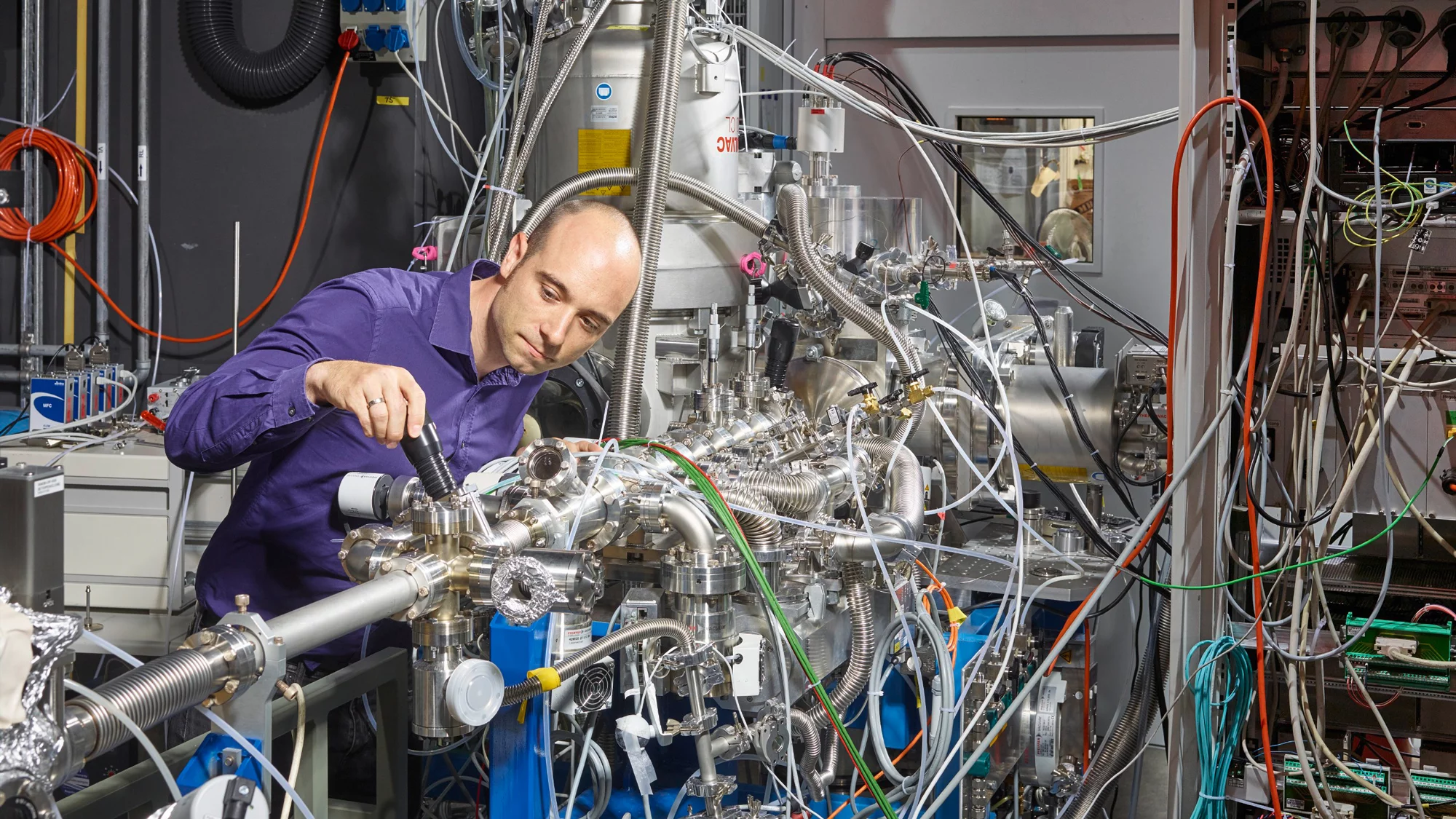From the inexhaustible raw material lignin, which as a constituent of many plants accumulates in great quantities, fuels and other important substances could in theory be extracted for industry – so far, though, it can't be done efficiently enough. Researchers at the Paul Scherrer Institute PSI and ETH Zurich have now found a method for identifying heretofore unseen intermediate products of the catalytic reactions used for this conversion. This could enable more targeted improvement of production methods in the future. The study appears in the latest issue of the journal Nature Communications.
How practical and environmentally friendly it would be if fuel could simply be manufactured from plant waste. Or phenols, which are urgently needed in the plastics industry. What if we could simply obtain fundamental raw materials of our civilisation from something nature produces in abundance year after year, which we otherwise leave to rot?
Lignin for example occurs in all woody plants and is, with around 20 billion tons produced each year, the most common organic substance on Earth besides cellulose and chitin. It consists mainly of carbon, hydrogen, and oxygen in a large and very complex molecule, which is composed of smaller compounds such as those needed for the production of fuel and phenols.
A major step towards understanding the mechanism
Theoretically, these compounds can be obtained from lignin through cracking
. Chemically, however, this is extremely complicated and costly. The bottom line: Up to now, it just doesn't pay. Yet this could change, thanks to more sophisticated methods. And researchers in Switzerland, at the Paul Scherrer Institute PSI in Villigen and at ETH Zurich, have taken a major step towards understanding the mechanism behind reactions that can lead to the desired chemicals. In this method, the large lignin molecule – as a model, the researchers used the lignin building block guaiacol (one part of the larger molecule) – is split into still smaller molecules at around 400 degrees in an oxygen-free environment. To do this, a catalyst is employed – a material that speeds up the reaction without being consumed. In this case, the researchers use a zeolite, a material with many pores and thus a large surface area where the reaction can occur.
First, so-called intermediates arise for just fractions of a second – gaseous reactive species that immediately react with water and oxygen to form phenols and other stable end-products. These intermediates can't be observed with conventional methods
, says Patrick Hemberger, beamline scientist at PSI's Swiss Light Source SLS. First of all, you can hardly tell them apart, because their molecules often consist of the same atoms, just arranged differently. But if we could determine these intermediate products and their concentrations, then it would also be possible to change the process in such a way that particular intermediates are preferentially generated and, in the end, the yield of the desired product is increased.
Synchrotron light makes the unseen visible
Since the molecules weigh the same, they cannot be distinguished by a mass spectrometer, which sorts substances on the basis of their weight. By means of so-called vacuum ultraviolet synchrotron radiation and a combination of mass spectrometry and photoelectron spectroscopy, which is available to us at the SLS, we were able to do it
, Hemberger reports. This means: The special beams of light that the SLS generates knock electrons out of the molecules, and these are then observed with special methods. The observed properties of these electrons are like a fingerprint, and they are unique to each substance.
Until now, such catalytic processes have been run on what the chemist calls a cook and look
approach: a trial and error search – with variations for example in temperature, catalyst, and concentration of the molecules – to find which experimental set-up yields most of the desired product. With the approach developed by Patrick Hemberger, we can now for the first time unravel the complex reaction mechanisms
, says co-author Jeroen van Bokhoven, head of the Laboratory for Catalysis and Sustainable Chemistry at PSI and professor of heterogeneous catalysis at ETH Zurich. And thus we can now develop new, better, and more environmentally friendly production processes in a more targeted way
, adds Victoria Custodis, the second co-author. On top of that, they also expect the approach to be transferable to numerous other catalytic processes.
Contact
Dr. Patrick Hemberger
Laboratory for Femtochemistry
Synchrotron Radation and Nanotechnology Research Division
Paul Scherrer Institute PSI
+41 56 310 32 65
patrick.hemberger@psi.ch
Original Publication
-
Hemberger P, Custodis VBF, Bodi A, Gerber T, van Bokhoven JA
Understanding the mechanism of catalytic fast pyrolysis by unveiling reactive intermediates in heterogeneous catalysis
Nature Communications. 2017; 8: 15946 (9 pp.). https://doi.org/10.1038/ncomms15946
DORA PSI
About PSI
The Paul Scherrer Institute PSI develops, builds and operates large, complex research facilities and makes them available to the national and international research community. The institute's own key research priorities are in the fields of future technologies, energy and climate, health innovation and fundamentals of nature. PSI is committed to the training of future generations. Therefore about one quarter of our staff are post-docs, post-graduates or apprentices. Altogether PSI employs 2300 people, thus being the largest research institute in Switzerland. The annual budget amounts to approximately CHF 450 million. PSI is part of the ETH Domain, with the other members being the two Swiss Federal Institutes of Technology, ETH Zurich and EPFL Lausanne, as well as Eawag (Swiss Federal Institute of Aquatic Science and Technology), Empa (Swiss Federal Laboratories for Materials Science and Technology) and WSL (Swiss Federal Institute for Forest, Snow and Landscape Research). (Last updated in June 2025)

